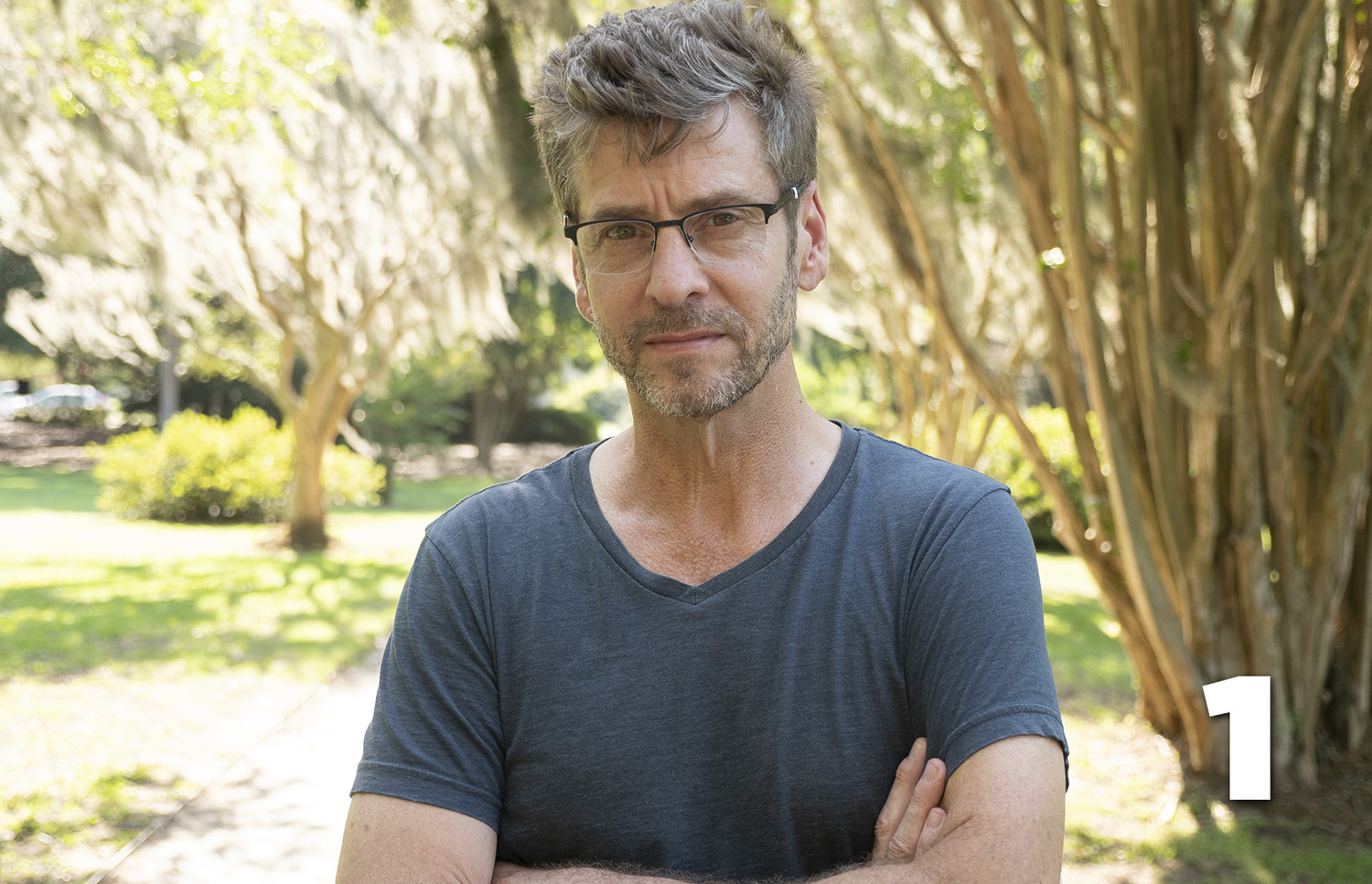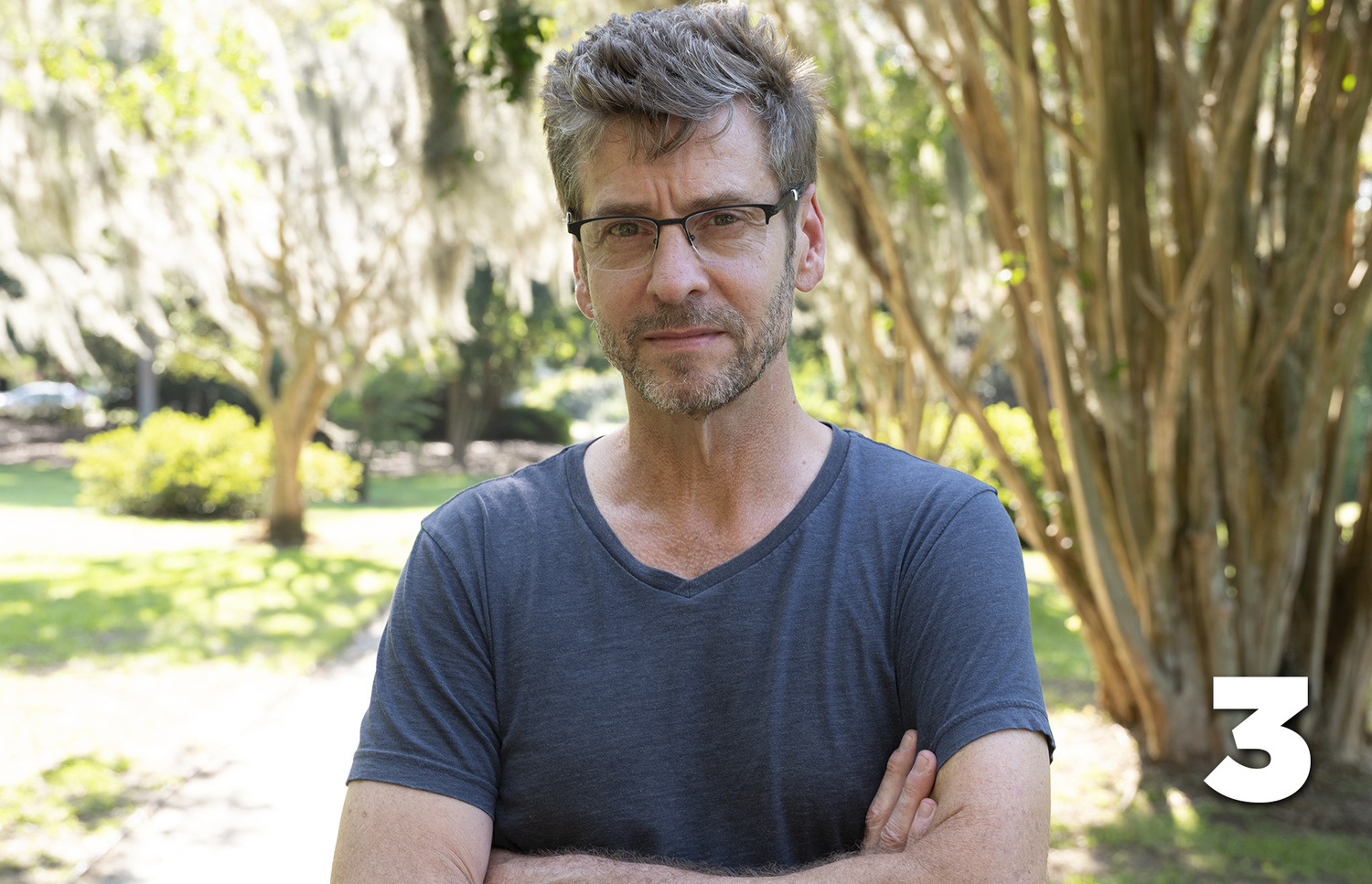Do cameras with larger sensors have a specific look? Last week I posted images taken with four different sensor sizes and let you decide. Spoiler Alert: Nobody could tell the difference.
The Test
Proponents of full frame and medium format cameras have always said that images taken with a larger sensor look different. Yes, they typically have shallower depth of field, but most photographers say that it goes beyond just that. They say that larger sensors produce "better looking images" but they are usually unable to elaborate. I decided to put this to the test.
This is not a resolution test, we will do that in another video. This test is strictly to determine if images are inherently different coming from different sized sensors and manufacturers.
I stood in one spot and shot my buddy Keith Bradshaw with 4 different cameras with 4 different sized sensors. To keep the field of view the same, I used a 50mm "equivalent" lens on each camera. To keep the depth of field the same, I changed the aperture as well. My cameras and settings are below.
FujiFilm GFX 50R/ 43.mm x 32.9mm sensor/ 64mm lens f/8
Canon 6D/ 35mm ff sensor/ 50mm f5.6
FujiFilm XT-3/ 23.6mm x 15.6mm sensor/ 35mm f4
Panasonic GH5/ Micro 4/3 sensor/ 25mm f2.8
I shot each of the images below in raw, I changed only the white balance, and stacked the images on top of each other. I cropped in on all of the images to hide the 4/3 aspect ratio of the GFX and GH5 and shrunk them to 1920 pixels in width.




The Results
Image 1: Panasonic GH5
Image 2: FujiFilm XT-3
Image 3: FujiFilm GFX 50S
Image 4: Canon 6D
The results of our polls were all over the map. With each option being chosen right around 25% of the time, it's obvious that the images are almost identical. Any noticeable differences like color or density could easily be tweaked further to make these four images look even more similar.
So what does this prove? Larger sensors do not produce different looking images on their own. Some of you knew that, most of you probably didn't.
But, shooting at the same F-stop will produce a shallower depth of field on a larger sensor. This is because F-stop is a unit of exposure and works on any sized sensor. A medium format camera lens' aperture shooting at F4 will be physically larger in size compared to a smaller lens' designed for a smaller aperture, and this physically larger aperture will produce a shallower depth of field.
This may lead you to believe that it's easier to shoot shallower images on a medium format system, but that isn't necessarily true. Most lenses that FujiFilm makes for this system are f/4 which will look like f/3.16 on a full frame camera. Of course, most "pro" 35mm lenses are f/2.8 which will produce a shallower depth of field than f/3.16. So, at least at this time, shooting with a shallower depth of field may actually be easier on a 35mm camera.
This test/post is not meant to discredit larger sensors. There are certainly many perks to large sensor cameras that will produce an overall better image like resolution, color accuracy, bit depth, lens sharpness, ISO performance, and dynamic range. We haven't tested any of that yet... But we will.






Too many unknown variables. Does this site compresses images? What would be proper set up to be able to tell a difference, can I see I difference from a phone screen?How about a test that show a more pronounced color and luminance gradation and also would be nice to have the opinion of an expert in the matter, not just someone that takes nice pictures.
I downloaded all four photos, and the exif of all these four photos are showing Canon 6D. Wanna explain that?
A CX / 1 inch sensor with a 12.96mm lens and an aperture of F/2.07 can produce same quality image as a FF camera? Maybe an iPhone 6 with a crop factor of 7.21 can deliver the same image if it has a 6.93mm lens with an aperture of F/0.77?
They already explained it in the original article but you weren't paying attention.
They stacked the images in photoshop and when they saved them they all got the same metadata, so that people wouldn't try to cheat by looking at the metadata.
For those MF look believers, if you dont like this test, then you should bring your own test or proofs that MF has its own look in terms of background separation and DOF. Otherwise, it's just a hype.
Wouldnt taking away dynamic range, high iso, and SNR, take away the variables that make bigger sensors better? Is like a swimming competition, but without the water so all have to go walking? Also regarding DOF, is about wider FOV and thinner DOF, not 50mm or 85mm lenses, try getting the dof of a 35mm 1.2 ff for example with a m43 lens, or a 24mm 1.4. The wider and thinner you go, the harder it will be to get the same results with a smaller sensor. Perhaps full frame is the best compromise between bigger and smaller sensors, but it definitively gives you better results than m43 or apsc.
I guess you are directionaly right, they all look the same in this test and it is kinda impossible to tell which is which. Considering that you mentioned clearly at the beginning of the video what is the idea of the test. I think what is driving the people crazy is that it feels like bringing 4 cars toyota corolla, ford f150, lamborghini and tesla and test if they can all drive at 60 miles per hour and then ask who did it better!?
I think it is a wonderful test. I bet Tesla is the best.
Why no iPhone comparison? Hater.
I shoot with the 11 years old Nikon D3, the D750, and the D300s (with the same lenses) and unless I shoot in low light, they all look pretty much the same.
Great article. Test is ok. For me it is relevant because it shows that sensor size in some common daily use and circunstances is not determinant for good IQ quality. For me it is the "drawing" that makes the difference between sensors. Bigger sensors draw better than smaller ones. Simply enough, the smaller the sensor, the more the real image details gets compressed, piled and stuck in to fit in. With miniaturization of sensors, one gets to a point that scene detail starts suffering. Back to this test, I could see the third picture as the best quality (biggest sensor) but my worst one was the second one (aps). I guess the reason is because so many variables and the internet. Have a nice sunday!
We cannot compare shrunk images. They look all the same unless we view in %100 size.
No doubt it clearly shows that the differences are minor when presented in this way. Though, my guesses were correct, they were definitely guesses and I wouldn't of put money on them.
The only way I was able to tell were the bokeh on the smaller sensors seemed a bit more rigid (esp. in the right hand corner), while the bokeh on the bigger sensors was softer, though that's probably lens characteristics more than anything. The only thing that separated the GFX and the 6D for me was color - the 50R was exactly the same as the XT3 to my eye, and the 6D had a slightly different color profile. Since the GFX matched the XT3, I was betting that they were both Fuji - had either been a different camera I probably wouldn't have been able to guess.
With that said, that's not the point of the test - it does clearly show that when presented in a small format, with the settings aimed at making an identical image, all are up to the task. Certainly a larger sensor is going to have advantages in low light or in creating really shallow depth of field not just because of sensor size, but also lens availability. If those things are important to you, I think that's where bigger sensors shine.
Thanks for doing this test. Certainly food for thought.
Not sure I get the point of this. If you are on a job surely you'd want the most versatile camera... which would be full frame so you have more versatility in frame size. What did I miss?
Well, the difference will show in some images, not in others. There is no logical ground for generalizing your findings in this sample to a rule that small MF always look the same (and I don't think you intended to).
We know full well for example that the sensor of the 6D is far behind other 35mm DSLRs, yet alone MF, in terms of dynamic range but in some images that won't make any difference at all.
You have chosen here to let the trees in the background blow to white due to local over-exposure, had you attempted to keep the whole scene within its dynamic range, you may have seen different results.
I personally really like some of the GFX lenses, in particular the 110mm f2.2 or the 250mm f4. There may be some 35mm lenses that have a similar look, but none of those I have tried deliver the exact same look.
Article title could be: "All sensors look the same after you adjust white balance so they look the same, match the ratios, and reduce to the same size." Well, yeah.
This "test" just seems pretty pointless. The strengths of much sensor are eliminated or changed to match the other. Sure I'm as fast as Usain Bolt if you put my halfway to the finish line.
Medium format creates a more tridimensional effect in the pictures. I was able to immediately nail down that pic # 3 was the GFX 50s by looking for tri-dimensionality.
Don't we need to consider the print size as well as the sensor size? Because if the technology stays constant between the sensors the only difference should be the degree of enlargement to reach a target print size. (eg 500X with MF might require maybe 3000X with APS-C) The larger sensor will have a smaller circle of confusion which means perceived depth of field will deteriorate more slowly as the print size increases. If we projected the images on to a wall instead of viewing them as postcards we would see a very big difference. This is nothing to do with resolution, or even the lens, just basic geometry.
BTW F-stop is just focal length divided by aperture diameter. It doesn't change with sensor size. It's not "a unit of exposure." The depth of field depends on the aperture diameter, not the sensor dimensions. The lens is just glass and iris, it doesn't know anything about sensors or film. Likewise the sensor doesn't know anything about the lens or the aperture.
I was able to spot the GH5 easily. The XT-3 was closer to the other two, but I called that one correctly as well, though not on the basis of apparent depth-of-field. The Canon and the Panasonic were apparently the same, notwithstanding the Canon's slight difference in exposure. My own answer to the article's title would be 4/3 only if you're on a tight budget and medium format only if your image sizes necessitate the extra pixels. The APS and FF seem to be the sweet spot, with the weight going to the former for amateur or semi-pro use and the latter for regular paid work.